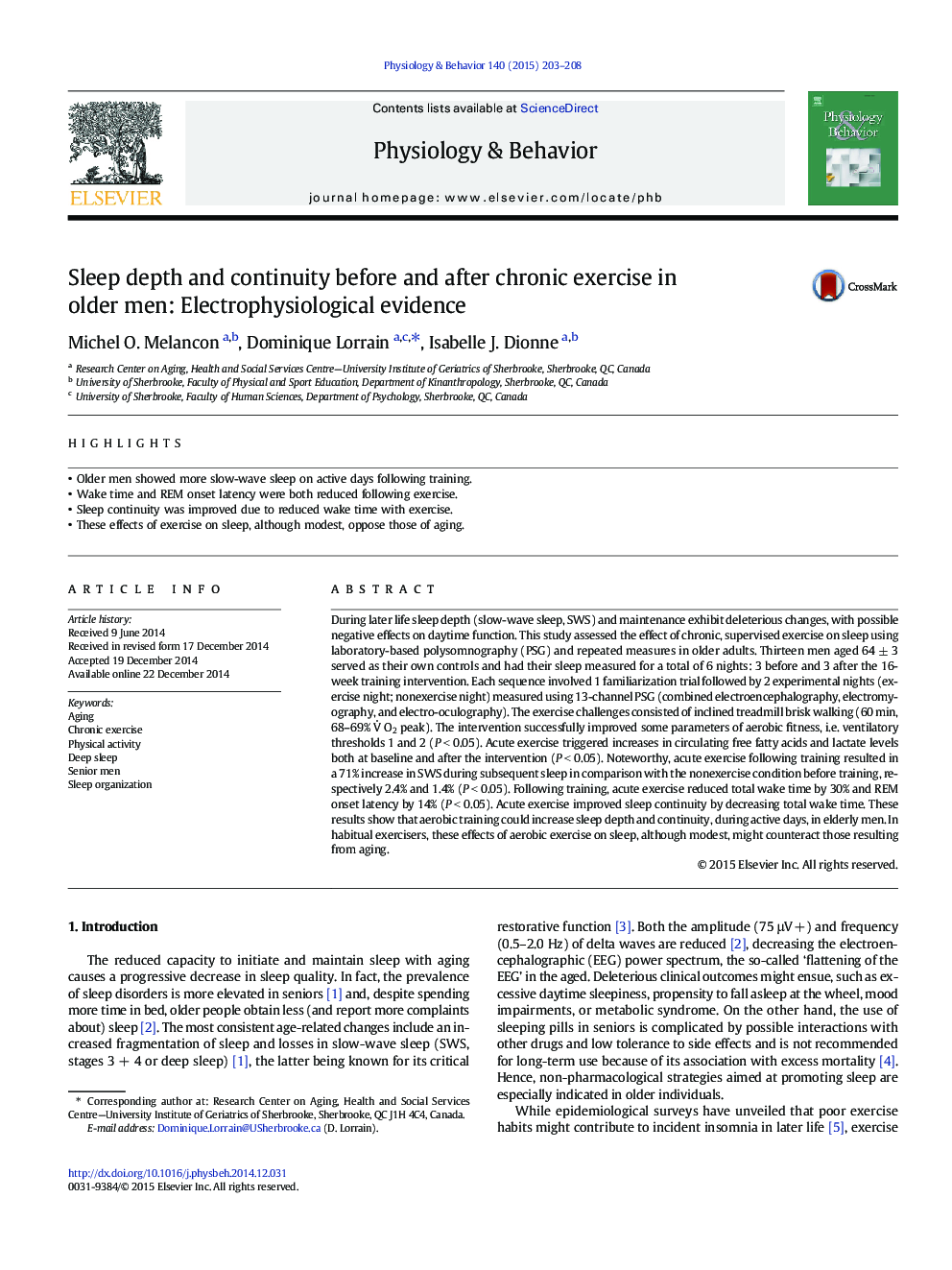| Article ID | Journal | Published Year | Pages | File Type |
|---|---|---|---|---|
| 5923846 | Physiology & Behavior | 2015 | 6 Pages |
â¢Older men showed more slow-wave sleep on active days following training.â¢Wake time and REM onset latency were both reduced following exercise.â¢Sleep continuity was improved due to reduced wake time with exercise.â¢These effects of exercise on sleep, although modest, oppose those of aging.
During later life sleep depth (slow-wave sleep, SWS) and maintenance exhibit deleterious changes, with possible negative effects on daytime function. This study assessed the effect of chronic, supervised exercise on sleep using laboratory-based polysomnography (PSG) and repeated measures in older adults. Thirteen men aged 64 ± 3 served as their own controls and had their sleep measured for a total of 6 nights: 3 before and 3 after the 16-week training intervention. Each sequence involved 1 familiarization trial followed by 2 experimental nights (exercise night; nonexercise night) measured using 13-channel PSG (combined electroencephalography, electromyography, and electro-oculography). The exercise challenges consisted of inclined treadmill brisk walking (60 min, 68-69% VËO2peak). The intervention successfully improved some parameters of aerobic fitness, i.e. ventilatory thresholds 1 and 2 (P < 0.05). Acute exercise triggered increases in circulating free fatty acids and lactate levels both at baseline and after the intervention (P < 0.05). Noteworthy, acute exercise following training resulted in a 71% increase in SWS during subsequent sleep in comparison with the nonexercise condition before training, respectively 2.4% and 1.4% (P < 0.05). Following training, acute exercise reduced total wake time by 30% and REM onset latency by 14% (P < 0.05). Acute exercise improved sleep continuity by decreasing total wake time. These results show that aerobic training could increase sleep depth and continuity, during active days, in elderly men. In habitual exercisers, these effects of aerobic exercise on sleep, although modest, might counteract those resulting from aging.
